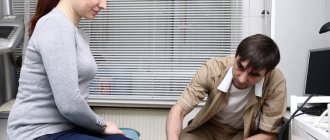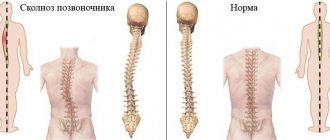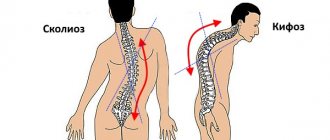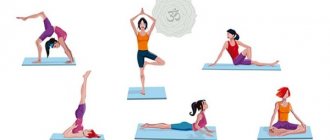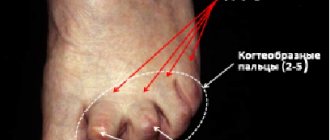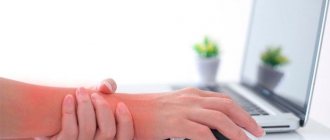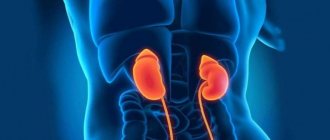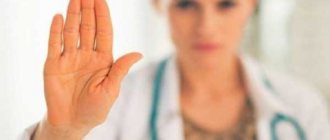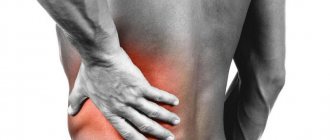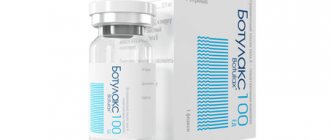Treatment of scoliosis, its identification, types and causes are often known only superficially. But when faced with it, not everyone understands what complications spinal curvature can lead to, how to treat scoliosis and prevent it from developing again in the future.
The concept of scoliosis has been known to the world since ancient times, and it received its name thanks to the Roman physician Galen at the beginning of our chronology. Of course, the problem of sitting upright, walking with a straight posture, and not taking positions that are uncomfortable or incorrect for the body is very common. This is especially true for children who at an early age expose their back to all sorts of curvatures. It is extremely difficult to keep track of them at school, but at home parents do not always pay attention to this. Moreover, they themselves can set an example while sitting hunched over the computer. However, childhood scoliosis is not a death sentence if it is not allowed to develop.
What is scoliosis?
To understand why a curved back is not the only reason to start treatment for scoliosis, you need to understand in more detail what it is, why it occurs and what consequences it may entail.
Scoliosis, scientifically speaking, is a three-plane deformity of the spinal column, which you can be born with, but can be acquired by ignoring correct posture or by getting injured. In the first case, when the diagnosis of Scoliosis is made to children under one year old, a congenital defect of the vertebrae, diseases associated with the neuromuscular system, connective tissues, bone metabolism, injuries, and other things may be observed. But this scoliosis also has a very strange property: it can go away on its own. However, you should not be happy that the curvature of the spine will not have to be treated. As a preventive measure, the child should have a massage, make sure that he does not receive new back injuries, and in the future tell him about the rules of good posture and its importance.
Acquired scoliosis can and should be treated so as not to worsen the situation when grade 1 scoliosis develops from a mild curvature into a more serious one. In this case, it will affect other internal organs, not just the spinal column. For the most part, acquired scoliosis is called idiopathic. This means that it is difficult for doctors to trace the cause of its occurrence, since most often this diagnosis is made to children during the period of their active growth. But medicine does not stand still and there are fewer and fewer cases where scoliosis is identified as idiopathic. The latest equipment, accurate diagnostic systems and extensive practice in combating spinal diseases provide answers to many questions.
Why is spinal curvature dangerous?
Before moving on to the types and classification of scoliosis, it is worth touching on an important topic: why curvature of the spine is dangerous. After all, no matter how much one would like to believe that scoliosis is quite harmless and many live with it all their lives, there are many reasons to worry. Of course, grade 1 scoliosis does not cause serious complications, no problems are observed, the body works correctly, the back has a slight deformity.
But, if you do not start treatment for scoliosis and allow it to progress, then the spinal column will suffer greatly first of all. Next, the back muscles become involved in the deformation, causing a slight displacement of the internal organs and a disruption in their functioning. This applies to the respiratory system and heart. From a simple diagnosis of “Scoliosis”, curvature of the spine turns into scoliotic disease. Complications on organs can lead to diseases such as cardiac ischemia, bronchitis, pneumonia, heart failure, problems with the gallbladder, cholecystitis, pancreatitis. Possible circulatory disorders in the brain, and along with this, attacks of motion sickness, dizziness, and outbreaks of headaches become more frequent. Women may experience problems with fertilization during pregnancy.
Therefore, before ignoring a slight curvature of the spine, it is worth undergoing diagnostics, consulting with a doctor about the need for sessions of therapeutic massage, manual therapy, sports, and other methods of preventing curvature.
What else is dangerous about scoliosis?
In addition to physiological pathologies, it can cause mental disorders. Particularly suspicious and emotionally vulnerable are young people whose severe curvatures of the spine and their unaesthetic consequences cause serious complexes and isolation. Rejection of one's body, and over time, self-loathing are the mental states of a person that scoliosis causes. As a consequence of such injuries, a decrease in adaptive capabilities and a slowdown in social development are observed, especially in childhood. Often the whole situation is aggravated by an obsessive fear of surgical intervention in children, so parents should ensure that their child undergoes the necessary consultation with a child psychologist.
So, before you decide to start treatment for spinal scoliosis and leave the disease to chance, you should take into account the high likelihood of a number of serious diseases and subsequent complications. Therefore, it is always better to diagnose scoliosis in a timely manner and begin immediate treatment than to try to get rid of its many negative consequences.
Types of scoliosis
In cases where scoliosis is grade 1, it is almost impossible to trace the curvature of the spine. In later stages, when grade 2 scoliosis sets in, the curved line of the vertebrae, asymmetry of the shoulders, shoulder blades, and hip line clearly appear. In the most advanced cases, the curvature is noticeable and hernias form.
Degrees of curvature:
- Scoliosis 1 degree - curvature of the spine at an angle from 1 to 10.
- Scoliosis 2 degrees - curvature of the spine at an angle from 11 to 25.
- Scoliosis 3 degrees - curvature of the spine at an angle from 26 to 50.
- Scoliosis 4 degrees - curvature of the spine at an angle above 50.
In addition to the degrees of curvature, scoliosis is also classified according to the classification into right-sided and left-sided . Here the classification should be understood according to the side in which the spinal column is curved.
With the S-shaped scoliosis, the spine is slightly curved, the shoulders and shoulder blades look asymmetrical, and the pelvis may be curvature.
With C-shaped scoliosis , the spinal column is curved in one direction, there is a high probability of the formation of an intercostal hernia.
Scoliosis is also classified according to the levels of the spinal column. Cervical scoliosis develops in the area of the first seven vertebrae. If this type of scoliosis is not treated, it can cause serious headaches and disrupt intracranial circulation. Grade 1 thoracic scoliosis occurs in most children and does not cause complications if treated. In advanced cases, when scoliosis is grade 3 or higher, there may be problems with the functioning of internal organs, and the risk of a number of diseases associated with each of them. Lumbar scoliosis develops in the pelvic area and can cause complications in women and men. The most dangerous of them is infertility.
How does scoliosis hurt?
Today I would like to review the complications - possible companions - of scoliosis.
Of course, everyone knows about pulmonary heart failure and the risk of recurrent lower respiratory tract infections with severe chest deformities, but these relatively rare problems are not what such patients come to neurologists, massage therapists and trainers with.
The most common complaint, oddly enough, is pain, which, of course, can have many causes, and here are just a few of them:
- Muscle pain. On the convex side the muscles are stretched, on the concave side they are shortened, but in both places trigger points can arise and poison patients’ lives for years.
- Radicular syndrome (including intercostal neuralgia, obturator nerve syndrome, neuropathy of the external cutaneous nerve of the thigh and iliohypogastric nerve) - deformation of the vertebra and discs increases the likelihood of protrusions and hernias and, accordingly, disc-radicular conflicts, due to which Neurological symptoms may occur (numbness, paresthesia, electric shock-type pain, etc.) along the dermatomes.
- Costotransverse arthralgia. Chest deformity is a predisposing factor for the pathology of the costotransverse joints; The triggering factor, as a rule, is trauma (awkward movement, fall, sneeze, blow, etc.).
- Facet syndrome. In the presence of a scoliotic arch, the facet joints are also seriously deformed; accordingly, they are more easily injured and can cause pain, and the risk of early arthrosis increases.
— Instability of the glenohumeral complex. If there is a deformation of the chest on the concave side, the scapula becomes “stuck”, on the convex side it goes into protraction, from which, however, by the force of the patient’s will alone, it cannot return to the physiological position, not only because of the shortening of the pectoralis minor muscle, as usual, and also due to rib deformation.
Accordingly, in both cases the scapula is not involved in the movement or is involved in it according to a pathological type, and if a person is not trained, such a patient has every chance of getting problems with the shoulder: instability of the ACJ and/or shoulder joint, their traumatization , tendinitis of the long head of the biceps, etc.
— Syndrome of the scalene muscle and the inferior oblique muscle of the head. If there is an arch in the cervical spine on the convex side, these muscles are in a shortened state, which predisposes to the occurrence of symptoms.
That is why in such patients it is critically important to avoid head protraction, because its presence will make the occurrence of these syndromes almost inevitable with all the diversity of the clinic, with the only difference being that in a patient with scoliosis the severity of symptoms will be convincingly asymmetrical.
- Coxalgia. In the presence of pelvic distortion, a large load falls on the “lower” hemipelvis and, accordingly, the hip joint, which becomes even greater if the pelvic distortion is caused not by anatomical, but by a functional shortening of the leg: this deforms the joint and increases the risk of earlier formation of arthrosis.
- Iliotibial syndrome. As in healthy people, it can be caused either by ill-conceived training in excess or by physical inactivity, the only difference being that in people with pelvic distortion it more often occurs unilaterally on the “short” leg, because the tensor fascia lata is initially in a shortened state there. May radiate to the lumbar region and/or knee.
— Iliopsoas syndrome (including obturator nerve syndrome, neuropathy of the external cutaneous nerve of the thigh and iliohypogastric nerve). In the presence of a scoliotic curve in the lumbar region, on the convex side, the iliopsoas muscle is in a state of shortening, which predisposes to the occurrence of this syndrome and pain in both the lower back and groin and/or in the area of the lesser trochanter, as well as compression of the muscles passing through it branches of the lumbar plexus.
Of course, this is not a complete list of possible complaints, since each clinical situation is unique in its own way.
It is worth emphasizing that healthy people routinely encounter the listed problems; with scoliosis greater than 20-30° according to Cobb, the RISK of their occurrence only increases.
However, it is important for a specialist in working with the body, no matter what he is called (doctor, massage therapist, trainer, etc.), to understand the presence or absence of a connection between the patient’s complaint and the underlying disease and possible solutions (exercises, massage, pills...) to the current acute problems, as well as compensation for the underlying factor (arch, scapula, pelvis, etc.) to prevent other symptoms that reduce the patient’s quality of life.
Dmitry Gorkovsky touches on these and other aspects of pathogenesis and methods of correction in the section “Working with posture disorders” of the powerful course Body Architecture ( view ) and discusses them in detail at his author’s seminar “Scoliosis: types, causes, treatment.”
Author: Nikolay Votchitsev.
For fitness trainers looking for courses that can increase their income, make them even better, and ensure they never have to worry about finding a job, we recommend checking out the following distance courses:
Upgrade is a month-long marathon with an individual selection of topics and an emphasis on increasing your income level.
Prehab is a distance course for fitness trainers who want to fully understand the topic of working with muscle balance and improving the movement of their charges.
Basic personal trainer course - for those instructors who want to supplement their knowledge with fundamental information. An incredibly large amount of useful material that will take you to the next level.
Power is an online course for fitness trainers who are passionate about functional and strength training and want to better understand the principles of these areas, as well as increase their income.
Body architecture - Dmitry Gorkovsky's author's course with face-to-face practical days and distance theory for fitness trainers, massage therapists and doctors.
Pregnant - training methods for working with pregnant women and recovery after childbirth.
Pilates is an online course by Ekaterina Vasilenko using the methods of the Pilates system.
Treatment of scoliosis
Now let’s touch on the most interesting topic, how to treat scoliosis, what doctors advise, and what rules should not be broken so as not to encounter it in the future.
First of all, if a person has grade 1 or 2 scoliosis, a therapeutic massage is prescribed, thanks to which it is possible to put the vertebrae in place and prevent complications. Therapeutic massage differs from regular massage precisely in these advantages, because a simple massage will not align the vertebrae. Also, during a therapeutic massage, the massage therapist knows which area of the back needs special attention and uses special ointments and gels.
Upon completion of work directly with the displaced vertebrae, the achieved effect is consolidated with therapeutic exercises, which are selected taking into account the characteristics of the person.
In more severe cases, a massage may be useless. Here, orthopedic corsets, special gymnastics and exercises are used. A set of such manipulations prescribed by a doctor should help maintain the spinal column so that scoliosis does not progress. But sometimes, if conservative methods are powerless, surgical intervention is prescribed.
Without the opinion of a specialist, it is difficult to analyze each individual case. Drawing conclusions and making a diagnosis is solely the job of the doctor, and not of friends and relatives. Also, you should not think about the worst ahead of time, such as surgery.
Treatment of scoliosis in Kyiv is carried out by the Aximed neurology clinic. High efficiency is achieved by special training programs, gyms, and supervision by a specialist with many years of experience and high accreditation. For severe cases, a hospital program is provided that will allow the patient to receive maximum attention and assistance.
Beautiful posture against scoliosis
If we exclude injuries or birth defects, then maintaining posture can be the main prevention against mild scoliosis. In addition to walking and sitting upright, you can sleep on a firmer bed, remove several pillows from under your head, and leave just one, not too large. Today, medicine has prepared special orthopedic mattresses and pillows for such cases, which can also be used as a preventive measure.
Light exercise can also have a beneficial effect on the condition of the back and the body as a whole. Yoga, which has become popular in recent years, is an excellent way to prevent your back and muscles from becoming stiff and twisted.
If your day is spent in the office and sitting hunched over has become your main habit, then at least dedicate lunch to walks in the air, walk with your back straight, and don’t slouch. In addition to spinal curvature, there are much more serious spinal diseases, so you should love yourself and your body. Watch your own posture and the posture of your children.
To begin treatment for scoliosis in Kyiv, you should apply for an appointment with a neurologist at the Aximed clinic. In addition to consulting a highly qualified specialist, you may be prescribed a digital x-ray for accurate diagnosis and identification of curvature of the spinal column. In cases where treatment is required, the neurologist can prescribe individual treatment sessions for you in the gym, therapeutic massage, manual therapy, etc. For patients requiring rehabilitation, the comfortable Rehabilitation Center of the Aximed Clinic is equipped.
You can make an appointment with a neurologist to begin treatment for scoliosis as soon as possible by calling the clinic’s convenient phone number.
What is dangerous about scoliosis in the lumbar region?
Curvature of this part of the spine can cause disruptions in the functioning of systems such as:
- urinary;
- sexual;
- digestive.
Lumbar scoliosis can cause you to urinate more frequently, especially at night. Unpleasant consequences are also a decrease in the tone of the abdominal muscles, impaired intestinal motility, which leads to constipation and accumulation of gases. Moreover, stagnation in the functioning of the stomach, pelvic organs and kidneys, accompanied by swelling of the extremities, can often occur.
Compressed nerve roots in the lumbar region can cause headaches and back pain. Also, negative consequences of scoliosis of the 3rd and 4th degrees can be:
- dysfunction of the gastrointestinal tract;
- the occurrence of muscle spasms and numbness of the limbs;
- pain in the hips, buttocks and legs.
The ability of scoliosis to affect female reproductive function should not be neglected.
The greatest danger is the last 4th stage of scoliosis, since most patients experience partial or complete loss of capacity.
